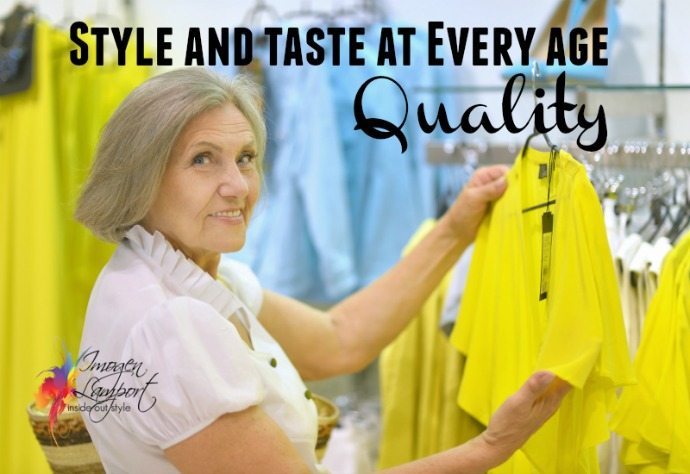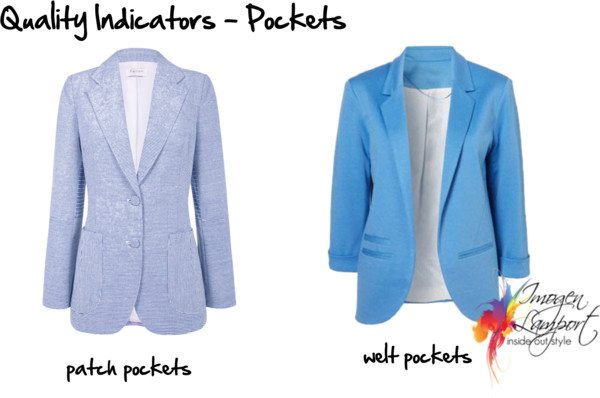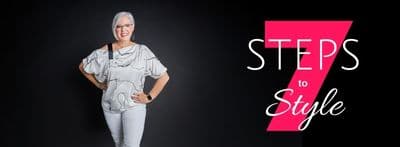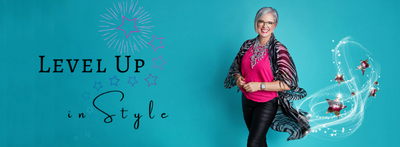 Here is the issue:
Here is the issue:
I am over 62 and the era where style and fashion were important, to me, was during the years I held a professional job from 1972 through the 1990s. During that era, dressing was simple then because of very few choices and narrow opportunities for your own self expression. Those were the years, in the U.S, for conformity. The emphasis was on being size 6-8 and dressing up.
By contrast, today’s world, fortunately, is more accepting of individual personal expression. But making the psychological leap is hard to redefine what good taste in classics mean to day and how to reinterpret for a more casual world.
For example, I hear that accessories should not be “cheap” yet it’s hard for me to understand what that means today when I see women who have a natural ability to choose jewelry, scarves and shoes that aren’t expensive or classic, yet work with their style features.
I’m still not sure what I should be telling myself as far as how to pick accessories. For example, a tunic top of the 1980’s certainly would look different from one today. The 80’s version may be wool gabardine with little embellishment.
Today that same tunic design could be expressive of my personality yet be found at H&M and not made of the best materials( but it is my color, the right print, the right shape and it works ) Should I buy it? Would it be in good “taste” and what does that mean today?
Thanks for giving me an opportunity to ask this question and I hope you can do a blog post with some ideas of videos and posts that may help me with this question. Your site has so much information which I’ve been looking through the pass few days to get this answer. It’s a great site with your passion through it. Thank you.
What is age appropriate? Does it even matter?
This is a huge topic and I’d love you to share your experiences and feedback too, as my reality is that I’m 46, not 62 so I’m only speaking from the experience of my age not that of someone older.
But, I do have lots of experience working with lovely clients who are older than me and I think having spoken to them about their concerns I do have some ideas. I think I will have to break down this question into a few posts as it’s so broad.
The first topic I will cover is quality.
20s
When we are 20 we are expected to have low level jobs, that don’t pay well, and a pretty much entirely new wardrobe. So expectations are that it will be made from lower quality fabrics and more about fun and fashion than classics or finding pieces to last. And this is a good thing as we are also discovering ourselves, growing and changing quickly and what we like today may not be representative of the person we are in 6 months or a years time even. Expectations are that our clothes won’t be of greatly high quality, and if they are super expensive people will wonder – are we going into serious credit card debt to own them (this is not seen as a good move, so we will make judgments at your poor choices) or are we being bankrolled by mummy and daddy (thus we are not grown up and looking after ourselves, again maybe an indicator of lack of responsibility or maturity). At this time shopping the the large chains such as H&M, Gap, Zara etc. is perfectly acceptable and even expected.
30s
By the time we’re 30 years old we have hopefully finished our education and are now working our way up the career ladder. We are no longer on the lowest level of wages so our clothing should reflect a higher level of quality than it did at 20. We may also be changing at a slower rate and so looking for some clothing items that are more investment pieces that will last a few years rather than a few weeks. We also want to look more mature, the little florals or really short items of our early twenties are now too young for us. We have moved on, but we certainly don’t want to look old. Now we can still shop in the same stores, but we may choose different pieces, or be a little more judgmental about the quality of the garments that come home with us.
40s
In our 40s we’ve gained more maturity and if we are in the workforce we may be in a much more senior role. Therefore there is an expectation that we are earning more money, so have the means to purchase better quality items and we are also expecting them to last much longer. More of our wardrobe will be coming at a higher (than in our 20s) price tag, but that doesn’t mean it all has to and that we can’t still have fun with fashion trends and fads if we want to.
50s or 60s
Just because you’re 50 or 60 doesn’t mean you’re old or only want to dress ‘classic’. You can still express your personality through clothing. There is not reason not to look for pieces that say quality but don’t necessarily have an expensive price tag. Clothes are an element of self-expression and this doesn’t disappear as we get older. It’s also important as we get older to look current and modern, so we don’t get labelled as old or having issues with change (as change as the one thing in life that we can guarantee will happen and is particularly important if we are still in the workforce). Not everything we buy needs to be made to last a decade. In fact I always recommend spending less on fashion or trend items that you will want to wear for a short while but then are easy to let go of as the fashions change and you move onto the next trend.
Quality is not just about price (and sometimes price isn’t an indicator of quality at all). It’s about: fit, fabric and construction.
When you are choosing a garment, whether it’s from H&M, Halston or Herms,
You need to ask yourself:
1.Does it fit me and flatter my body in the way I want?
If it doesn’t fit exactly can it easily be altered to fit me? If it pulls and strains at seams it’s never going to be a great option nor is it going to look high quality. If it doesn’t fit it’s never going to look high quality, no matter what it cost you.
2. Is the fabric one that I enjoy touching (it feels nice on my skin)?
Is the fabric one that will wear reasonably well (it won’t look old and pilled after two wears like acrylic tends to do)? How long do I expect to keep the garment for? One season is very different from 5 years or more. If you expect to keep it for a longer time, then find a better quality fabric that will wear well. Does the fabric look high quality (it may be polyester chiffon but looks like silk and that’s fine)? Or does it have a low quality appearance such as a low thread count (if you’re not sure about the differences go to the bedding department and check out the differences between 1000 thread count sheets and 180 thread count sheets).
3. How well is the garment constructed?
If there is obvious top stitching that isn’t part of the design details and the stitch length is long, it won’t last very long. Are there threads hanging off the garment already, or little pulls in the fabric. If the seam allowance is very small it will mean you can’t let any seams out, and if the seams unravel, you may have difficulty sewing them up without fraying (small seam allowances are normal in knits but not in woven fabric garments). Is it lined? Jackets, skirts and dress pants may be lined which make them last longer and may be more comfortable. Lined garments tend to look more expensive. Things like patch pockets on jackets tend to make the jacket look cheaper, but a welt pocket will make a jacket look more expensive.

So whether or not the garment is cheap or expensive. It’s what it looks like that counts. Quality doesn’t have to mean conservative or classic. It can be funky and edgy, or feminine and floral. If that tunic is from H&M but is well constructed, fits you and the fabric is pleasing and made to last more than a few wears, then go on an buy it, no matter what your age. There are no rules about not purchasing garments from any particular retailer once you are over a certain age. It’s always about picking the pieces that reflect your personality and work for your body that look the quality that you desire for you, right now, from wherever!
Read all about:
How to Be Contemporary and Casual in Classic Clothing Styles














A really informative article. I am creeping up towards 80 years of age and don’t want masses of clothes. A few well chosen ones that are current and not frumpy are my goals. Have to look good for my stylish granddaughters and myself. I love your articles and videos. Thanks Imogen
I am enjoying style more now than ever and I feel the freedom that comes with leaving the workforce as I can pursue my interests and have fun with fashion. I do not feel the need to conform to career “dressing” anymore and can let my creative choices run wild. I am turning 60 in September. I do not care if every bit of clothing is “flattering.” Rather, my ensembles should tell an interesting story about me. I can explore fashion to please myself now and not worry about what anyone else thinks.
However, there are many issues I do care about…deeply. Was the garment made by someone who has been paid a fair price for their labor? Are the people who make the garments I purchase working in a clean and safe environment? Are the people making my garments adults? Are the materials used to make my garments ecologically sustainable? Are my purchases supporting the local economy or artisans anyway? These are some of the questions I ask myself now.
I shop second hand and or purchase from designers that have a reputation toward sustainability. If I am purchasing a new item, it will probably cost more. So, I purchase less. If it is a second hand item, I can purchase a garment of very high quality that was prohibitive to my budget if I had wanted to buy it new.
Choosing to dress creatively goes beyond styling myself, but to finding ways to minimize my environmental footprint and supporting fair trade while purchasing high quality garments within my budget.
I love these thoughts Lisa on how you are free but have a more specific brief for anything new that comes into your wardrobe.
Here it is in a brief form: Know your style, purchase towards sustainability (ethical designers, second hand, hand made), and take care of what you own. Inherent in this process are high quality items that will last for years. In fact, I know it is true.
A great post. At 61 I’m more confident in my choices than ever before thanks to having my colours analyzed and reading great blogs like yours.
Since I’m retired, I try to buy clothes of lasting quality since this is more cost effective in the long run. I’ve found a style that suits me, simple basics in good fabrics embellished with jewellery and especially scarves – that’s where I indulge my love of beautiful textiles and prints.
Like Lisa, I try hard to buy from sustainable sources where I know the makers are being paid a living wage. This can be difficult – I find most local designers (Canada) don’t make sizes that allow for my 8-shape hips. And they focus on a younger demographic with clothes that feel too clingy for me. But this is typical of the industry as a whole. Thank goodness for the internet and mail order!
Thank you for answering this question. This is so helpful Imogen. It was also helpful to hear that others had the same concerns.
As always, enjoying your blog posts.
Part two of this is coming out today!
I am 65, just had a facelift (my choice instead of a new car) and retired in Cocoa Beach Florida. I wear a lot of Eileen Fisher linen and big hats. It is usually so hot and humid here that to wear anything heavier or that clings to my body is just nuts. So while I might appear larger with loose clothing, I am comfortable and happy. And If I’m feeling good I honestly don’t give a rat’s patooty what someone else thinks. I have earned my freedom of expression
I think there is a difference between loose and flowing vs oversized and engulfing!